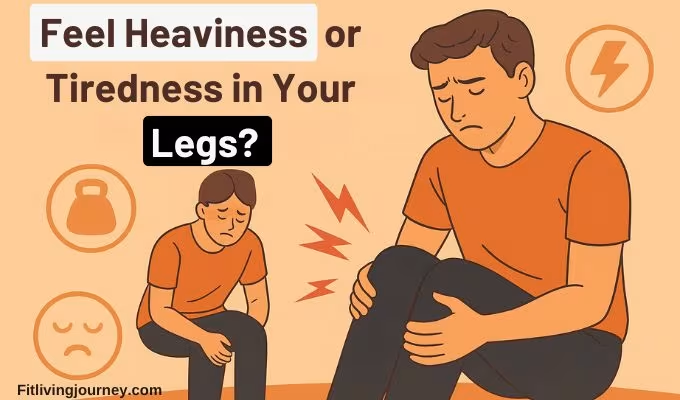Yoga for Varicose Veins
Do You Feel Heaviness, Aches, or Tiredness in Your Legs?
Do you feel sometimes that your legs are tired, heavy, or achy, especially after long hours of standing or sitting?
Are you starting to notice bulging bluish veins on your leg? Then it might not just be fatigue. It could be a sign of varicose veins.
Let me explain in simple words, Your veins have tiny valves that act like one-way flaps, helping blood flow upwards towards your heart.
But when these flaps become weak or don’t close properly, some blood leaks backward and starts pooling in your legs.
This creates pressure, causing the veins to stretch and bulge — forming varicose veins.
And you don’t always need pills or painful procedures to get relief.
Yoga is very helpful in this condition.
Practicing yoga asanas regularly can improve blood flow, reduce pressure on your veins, and relieve the discomfort.
Here are five very effective yoga asanas that are gentle, therapeutic, and suitable even for beginners.
1) Ardha Sarvangasana – The Half Shoulder Stand
inversion pose allows stagnant blood to flow backwards towards your heart and reduces swelling in the legs.
➛ Lie supine on the mat, feet together, hands beside the body.
➛ Exhale and draw the feet close to the hip, hold the legs.
➛ Gently raise the lower part of the body vertically using the abdominal muscles, supported by the hands.
➛ Balance the entire body weight on the palms, elbows, and shoulders.
➛ Chin should be fixed in the jugular knot.
➛ Maintain the pose as per your comfort but not longer than two minutes. Breathe normally and slowly.
➛ To return, gently lower your hips with hand support while inhaling. Let back and legs slide from the hand.
➛ Take a few deep breaths and rest.
2) Sarvangasana – The Full Shoulder Stand
This classical pose gives your heart a break and supports upward blood flow, making your legs feel lighter with regular practice.
- Lie supine on the mat, feet together, hands beside the body.
- Inhale and while exhaling, raise both legs to a right angle.
- Keep knees straight, and the body above the hips on the ground.
- While exhaling, raise arms, hold the waist, and push the body up.
- Place the body weight on the arms. Rest on elbows and shoulders with legs upright.
- Secure the chin on the jugular knot.
- Maintain the position for up to two minutes, breathing normally.
- Return to starting position while inhaling. Let the back and legs slide down. Rest and breathe deeply.
Tip: If this is difficult, lie down so that your hips touch the wall and rest your legs against it for 10–15 minutes. Focus on the rise and fall of the abdomen while breathing.
[ How Screen Addiction Is Quietly Damaging Your Brain ]
3) Utkata Asana – The Powerful Chair Pose
This pose activates your calf muscles — the body’s “second heart.” It pumps blood upwards, relieving pressure from veins.
➛ Stand erect, hands on sides, feet parallel with one foot distance between.
➛ Neck straight, shoulders firm, abdomen relaxed, chin parallel to the ground.
➛ Focus on a point in front.
➛ Inhale and stretch both arms forward, palms facing down.
➛ Raise heels, and immediately exhale to lower the body into a squatting position.
➛ Keep thighs pressed against calves, balance on toes, knees parallel, hands forward.
➛ Hold the pose with breath suspended.
➛ Return to start by inhaling, lowering heels and arms.
4) Sahaj Bhavasana – Feet and Toe Awareness
Varicose veins often start with rigidity in smaller vessels. This gentle movement increases microcirculation and mobility.
- Sit erect on the floor, legs straight, knees unbent.
- Thighs on the floor, palms on thighs or beside the body.
- Point the ankle of the right foot out, flex the left ankle.
- Alternate the movement.
- Repeat 10 times with alternate feet.
5) Makarasana – The Relaxation Pose
After movement, rest your body and nervous system. This posture calms the mind and reduces venous pressure.
➛ Lie in prone position, legs stretched and slightly apart, big toes touching.
➛ Stack palms and rest your head on them.
➛ Let all weight sink into the floor.
➛ Close eyes, breathe rhythmically.
➛ As pulse, blood pressure, and mental activity slow, a calm state is reached.
➛ Maintain this relaxation.
➛ Open your eyes gently and roll to the right side before getting up.
Additional Useful Tips for Managing Varicose Veins
- Elevate your legs for 10 minutes daily while reading or resting. Let gravity support your veins.
- Massage your legs with upward strokes using sesame, mustard, or coconut oil. It helps circulation.
- Avoid long periods of sitting or standing. Move or rotate your ankles every hour.
- Improve posture and nerve response through yoga to reduce pressure caused by stillness.
- Listen to your body Yoga is not just a treatment — it’s a practice of awareness and healing.
FAQs
Q1. Can yoga cure varicose veins completely?
Ans. Yoga may not cure varicose veins completely, but it significantly improves symptoms and prevents worsening.
Q2. Which is the best yoga pose for varicose veins?
Ans. Sarvangasana and Ardha Sarvangasana are among the most effective poses for improving blood flow.
Q3. Is it safe for beginners to do these yoga poses?
Ans. Yes, the asanas listed are gentle and beginner-friendly. However, consult a doctor if you have severe symptoms.
Q4. How often should I practice these asanas?
Ans. Practice these asanas daily or at least 3–4 times a week for best results.
Q5. Can I do wall-supported leg raises instead of full inversion?
Ans. Absolutely, Resting your legs against the wall is a great alternative that offers similar benefits.

